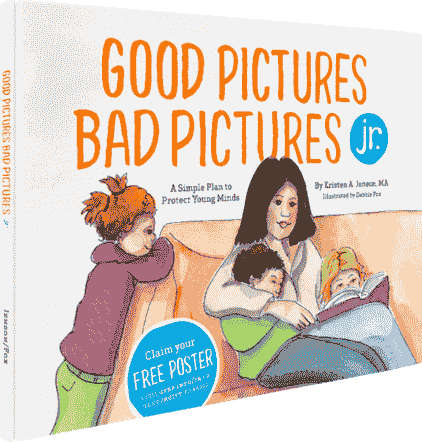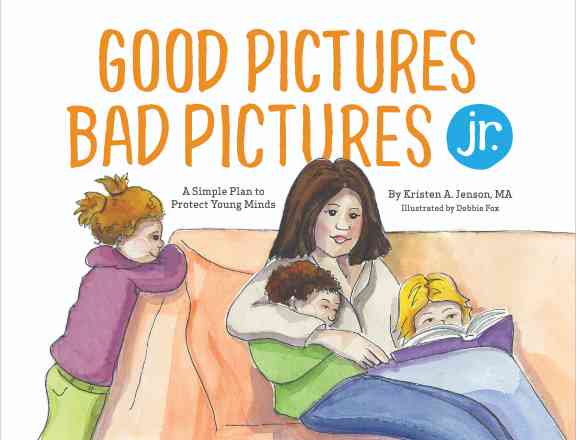
How Porn Hijacks Young Brains and 3 Effective Ways to Defend Your Kids (Part 1)
This is part 1 of a four-part series by Sam Black from Covenant Eyes. Sam teaches parents all over the country how to prepare their children to be safe online. He also serves on the Protect Young Minds advisory council. Don’t miss part 2, part 3 and part 4 of this series!
Fifteen-year-old Sarah’s brow furrowed as she recounted her story of being stuck on porn at age 8.

As a homeschooled child, Sarah (not her real name) had many advantages in avoiding inappropriate content online. She didn’t ride a school bus packed with kids watching cell phones, and she missed the naughty jokes on the playground. But she did overhear some boys saying words she just didn’t know, so she picked up her dad’s phone to search what she had heard.
Seizing a kids’ natural interest in bodies and sex
Each search produced a parade of images and video that shocked and confused her and ignited feelings she didn’t understand. Like every child, she was curious about what people looked like naked, but this was so much more than that. Each image and video led to another, and only the sound of her parents’ footsteps could break the trance.
In secrecy, day after day, week after week, month after month, she watched porn for two years before her parents discovered her habit and provided help.
Related: The Secret Life of a Young Girl Abused by Pornography
Kids who are exposed to porn are not bad kids
At 15, she brought her dad to our Covenant Eyes conference booth to sign up for internet accountability and filtering services, and she grabbed a handful of flyers to take home. “So many of my friends are struggling too,” she said.
Sarah’s story is common. Children today, who usually know little to nothing about sex, stumble into hardcore and deviant porn. Because they are unprepared for what they see, they fall headlong into its neurologically stimulating trap. Often, they sense that this must be wrong, but their brains won’t turn away.
Feelings of shame, secrecy, and fear lead them to keep their secret from parents, yet they are less reserved about sharing their discoveries with other children. So pornography is being spread from child to child like the secret handshake of an exclusive club. Except the membership is sadly broad and destructive.
All children are at risk
Parents shudder at this thought. It’s hard to imagine that our beautiful, sweet, and playful child would ever be curious (like you and I were curious at that age). And even if they did see pornography, wouldn’t they just look away? It wouldn’t dig its claws into them, right? If they did see porn, wouldn’t it be better to just ignore it, because talking to them about it might make them more curious, right?
In this four-part series, I will help parents understand why an untrained child has such a difficult time looking away from pornography. We can train our kids to turn, run, and tell, so that porn doesn’t have an opportunity to stain their minds and how they view the world.
[[CTA]]
Holy smokes, what’s that?
Porn is not sex; it is a hijacking of sex.
Today’s graphic online pornography commandeers the brain’s neurology with what science calls supernormal stimuli. In basic scientific terms, a supernormal stimulus is anything that is artificially enhanced and exaggerated to create a response that is greater than normal. Think junk food, violent video games and (of course) porn. It can subvert and redirect our natural appetites and motivational systems.
Since the 1950s, a myriad of studies by Niko Tinbergen and others have explored supernormal stimuli through songbirds feeding fake babies who had wider and redder mouths, peacocks choosing exaggerated dummies for mating, and butterflies trying to mate with bright cardboard replicas and ignoring other real butterflies.
These animals were attracted to unnatural illusions of the real thing even when it when it would lead to their eventual destruction.
We see supernormal stimuli affecting people today as they choose saltier, sweeter, and fattier processed foods. Our senses are artificially stimulated far above what we find in nature.
Related: Protect Kids from Porn: A Simple Lesson from (Fake) Butterflies
Pornography, the great fake
Pornography is a totally artificial and exaggerated version of what real bodies look like and how real people engage in healthy and intimate sexual relationships.
In other words, porn can light up a brain, including an unsuspecting and inexperienced child’s brain. Today’s pornography activates fireworks shows in the arousal and rewards systems of the brain.
Online, a person can surf through dozens, even hundreds, of images and videos at a time. Seeing so much pornography, which is often shocking, violent, and even bizarre, isn’t normal. We weren’t designed for this. And our brains are taken hostage.
Supernormal stimulus is just the first step. Cravings and seeking out porn come with repetition.
And often, adults who struggle most with pornography were exposed at early ages.
Join me in part 2, where we’ll review some basic neurochemistry that rivets our kids’ attention when they see pornography. Parents who understand what is happening are better prepared to help their kids!
Read the next post in the series - part 2.
Share on Pinterest!




Good Pictures Bad Pictures Jr.
“I highly recommend this book to all people with children. A must have for all parents!” —Amazon Review







